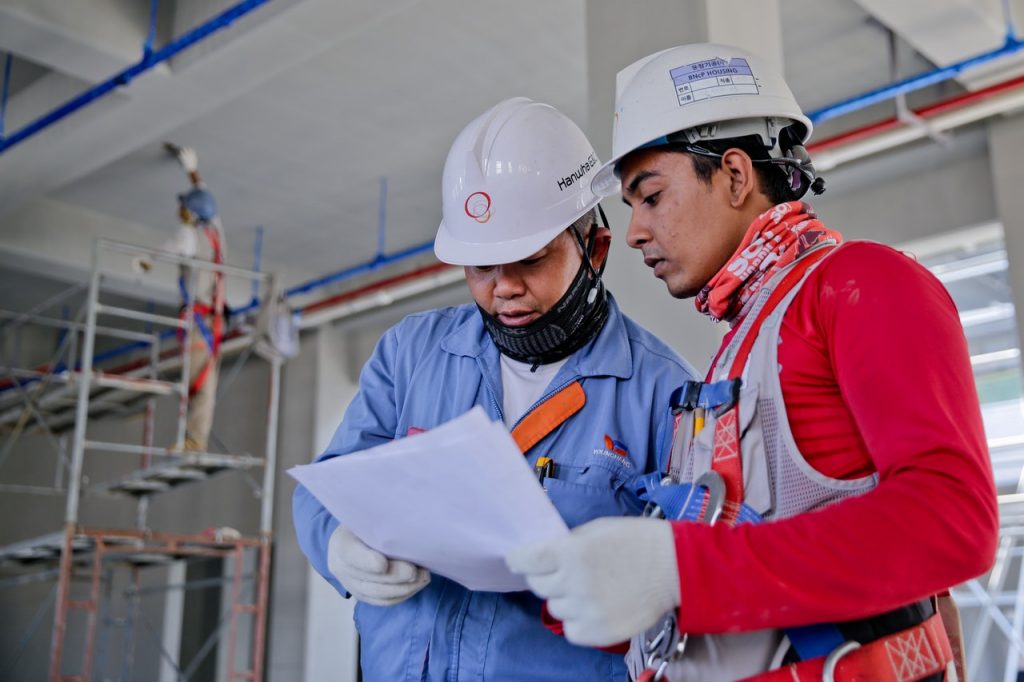In the long run, every life-saving construction procedure that contractors and workers apply will reduce the risk of fatalities and injuries. The simple construction design of lightning arresters can prevent equipment damage and other potential safety hazards that might interrupt office duties and comfort at home. Let’s share some innovations that can save lives when installed during building constructions.
 Fire Extinguishing Equipment and Circuit Breakers
Fire Extinguishing Equipment and Circuit Breakers
Much like how drains must be installed to prevent flooding, electrical connections for power tools and equipment should have a central circuit breaker. Sometimes, emergency evacuation might lead to injuries during a fire outbreak. Fire extinguishing equipment should be placed in strategic positions to forestall unnecessary panic in any construction site. Apart from electric wires, lightning strikes can ignite a spark and fire. So, contractors should install circuit breakers that will disconnect all electrical systems when there’s a surge.
Create a Muster Point
When natural disasters like earthquake occur, it can topple the buildings in construction sites. There’s often the risk to life factor when HSSE (Health Safety Security and Environment) managers fail to indicate safe areas as muster points. Usually, construction sites have different types of materials, earth-moving machines, and equipment. An ideal muster point is a safe place for keeping workers after evacuating the site. Most times, muster points are located by the main entrance gate where it’s easy to conduct a headcount.
During a fire outbreak or building collapse, muster points should be accessible. As part of construction procedures, there should be a designated area for parking construction trucks, cranes, and vehicles.
 Conduct Drills
Conduct Drills
Much like scheduled maintenance for pipes, drills should be used preemptively to prevent catastrophes from happening. Drills are mock activities and practices that prepare people to handle emergency conditions very well. It’s part of the HSE (Health Safety and Environment) policy for workers to engage in drills. Also, construction procedures require regular drills for all workmen and other staff inside the site. However, the HSE manager should cordon-off all potential hazards spots with bright cones during drills. With visible signs of caution, construction crew members can avoid collisions as they prepare to handle emergency evacuations.
Using Personal Protective Equipment
Every HSE policy for workplaces like construction sites requires everyone to wear protective equipment. These personal protective equipment (PPE) are gears, hardhats, safety goggles, and earmuffs. Other PPEs include coverall, reflective jackets, safety boots, and hand gloves. Usually, coveralls are fire-resistant clothing, and they protect the wearer from sharp objects and naked electrical wires.
Give Induction to New Employees and Visitors
Induction is the first phase of safety training that new employees or visitors of construction sites must acquire. As part of construction procedures, everyone must receive safety instructions and undergo a test before gaining access to the workplace. Also, new employees will be taught about the company’s culture, operating equipment, and safety risks in the workplace. After this proper procedure, they expected to use their PPEs in and around the work site.
Use Warning Signs and Hazard Prevention Systems
Learn from infrastructure company Acciona, and install warning signs and hazard prevention systems in work sites to potentially save lives. Usually, safety codes and regulations require HSE managers to label exit points and place safety instructions strategically. Stores and containers with harsh chemicals should be appropriately labelled. Also, there should be caution signs on machines with fragile, hot, and sharp parts. These safety signs and instructions should be printed with reflective colours for people to see when the construction site is dark. Apart from avoiding potential hazards, safety signs can enhance communication in construction sites. Also, a little signage or board with instructions enhances the safety of workers and pedestrians on site.




